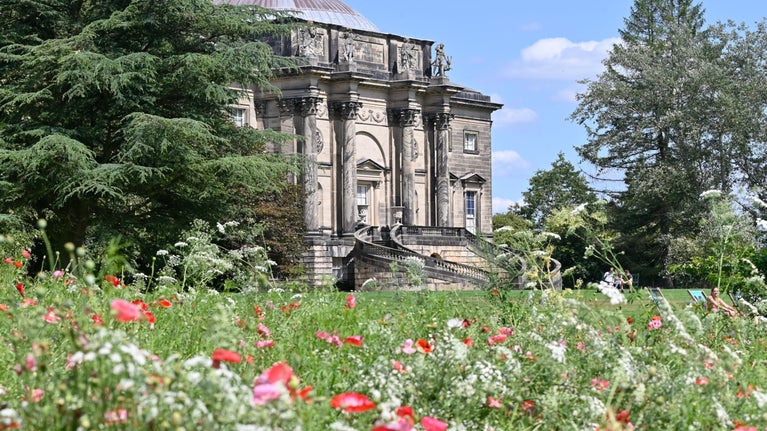
Immerse yourself in history
Meet people from the centuries gone by, learn about the unique artworks in our care and understand more about historic traditions.

Over 300 British aristocrats married American women between 1870 and 1914. Popular perception understands these marriages as arranged trades of titles for dollars. While this explanation is correct for a few exceptional cases, these marriages are better understood as love-matches, made as the elites of Britain and America increasingly interacted in the late nineteenth and early twentieth centuries.
In the decades following the American Civil War, the American elite expanded and grew wealthier. At the same time, improvements in transatlantic steamship travel allowed greater numbers of Americans to travel to Europe.
Americans had long looked to Europe as the ultimate arbiter of high culture. Some American families even settled in London and Paris and made social connections within the elite circles of those cities.
Aristocratic estates across the United Kingdom experienced economic decline and agricultural depression throughout the late nineteenth century. Increasingly, the income from estates could no longer adequately support all of the dependent members of an aristocratic family.
By the 1870s and 1880s, British aristocratic men increasingly sought to capitalize on expanding business opportunities around the globe. Many went to America, especially to the Mid-West and to New York. As representatives of the British aristocracy, they were welcomed into the highest American social circles wherever they went.
King Edward VII, as the Prince of Wales, was instrumental in opening British aristocratic society to Americans, as well as to foreign plutocrats and Jews. He counted several American-born aristocratic ladies amongst his closest friends, including the New York-born Jennie Jerome Spencer-Churchill, mother of Winston Churchill.
The composition of Edward’s social circle itself suggests the worldly, cosmopolitan makeup of an emerging transatlantic elite during the late nineteenth and early twentieth centuries.
As Americans sought culture and aristocratic Britons sought opportunity, these groups intermixed and began to intermarry. In this way, over three hundred American women became British aristocrats by marriage.
However, not all of the American brides were wealthy, nor were all of the British grooms titled. In fact, the majority of the men were the younger sons of titleholders, with no expectation of future titles or inheritance. This marriage phenomenon peaked in the 1890s, when the wealthiest brides married the loftiest titles. This was epitomized by the 1895 marriage of the very wealthy Consuelo Vanderbilt to Sunny, ninth Duke of Marlborough.


This article contains contributions from Melissa Aaron from the King’s College London, a historian that specialises in the social history of American and British elites in the later nineteenth and early twentieth centuries. Melissa is a contributor to the Trusted Source project.

Meet people from the centuries gone by, learn about the unique artworks in our care and understand more about historic traditions.

A hub for multi-disciplinary research projects and research engagement at the University of Oxford

Find out more about our Trusted Source articles, which were created in partnership with the University of Oxford, and explore topics related to the special places in our care.

One of three founders of the National Trust, Octavia Hill is among the greatest social entrepreneurs in British history and the impact of her life and work is still felt today.

Find out about the life of Benjamin Disraeli, including his journey from charismatic young politician to twice-serving Prime Minister and his move to Hughenden Manor in Buckinghamshire.

Read the story of some of the National Trust's most mysterious and unconventional benefactors and how two authors discovered more about their true identities.